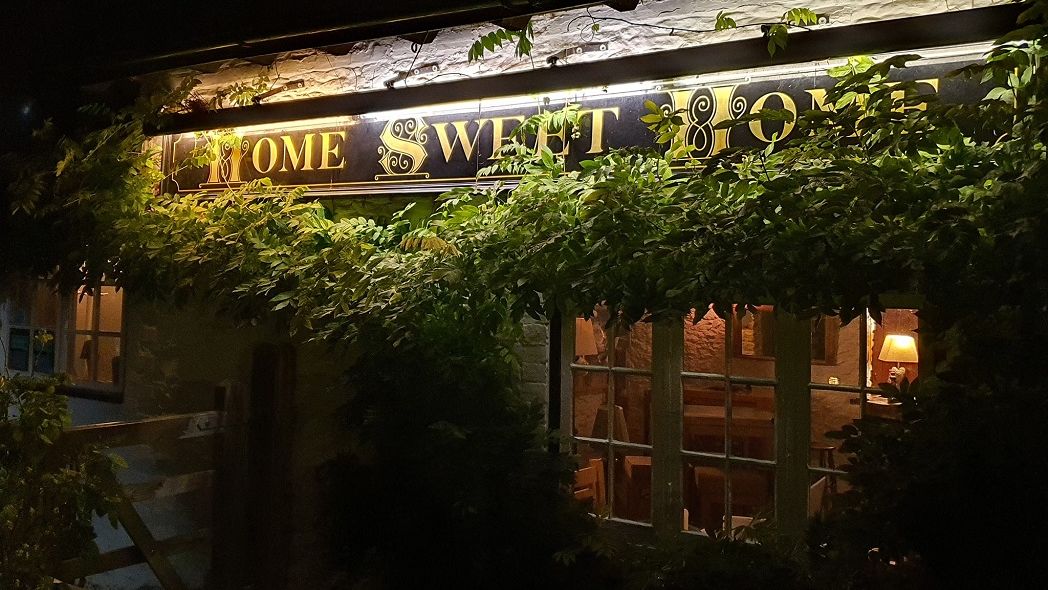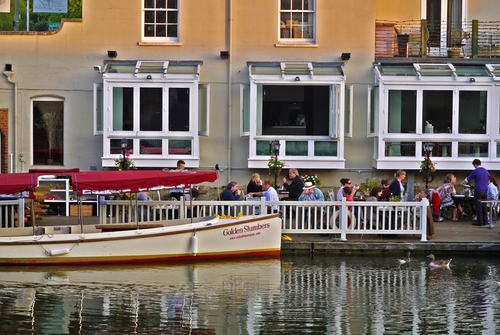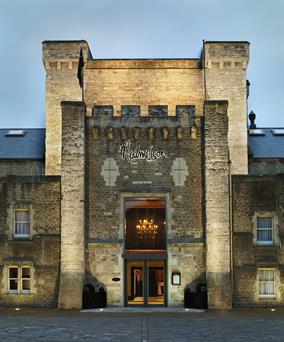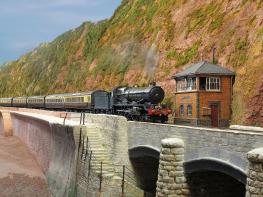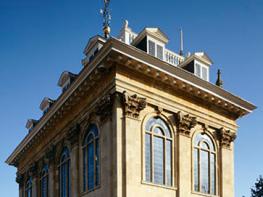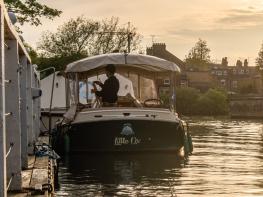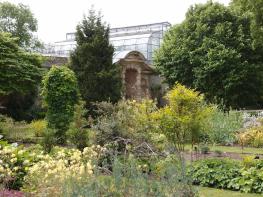Recently refurbished to a very high standard, The George blends contemporary comforts with the…
Dorchester – city to commuter village

4.5 miles (7.2kms)
About the walk
Dorchester is steeped in history. On the surface it seems to represent the quintessential English village, inhabited by commuters and retired professionals. But there is much more to it than quaint winding streets and rows of pretty cottages. The Romans built an important town here, Dorocina, though its ramparts are now only faintly recognisable, and the present abbey stands on the site of the first Saxon cathedral in Wessex. Excavations have revealed a number of Roman artefacts in the locality – among them an altar to Jupiter and Augustus, various tessellated pavements and some Roman coins. Who knows what other relics of their occupation may lie beneath surface.
In effect, Dorchester is one of our oldest cities, though it seems hard to believe looking at it today. In 1140, the Bishop of Lincoln founded a priory here, endowing it with various valuable possessions of the bishopric. As a result, the cathedral became Dorchester’s abbey church. Thankfully, it was saved from demolition at the time of the Dissolution and purchased by a local resident for the modest sum of £140. He bequeathed the abbey church to the parish of Dorchester in his will.
The abbey remains at the heart of Dorchester and is a very special place in the history of Christianity in this country. Inside are many treasures that illustrate the abbey’s long and distinguished history. The 12th-century lead font is decorated with figures of 11 apostles seated beneath a striking Romanesque arcade. The nave is thought to have been built over the remains of the original cathedral and the east window is defined by a line of small sculptured figures depicting scenes from the life of Christ. The Jesse Window has 14th-century tracery, sculpture and stained glass bound together in one single theme. It depicts the story of how Christ was descended from King David’s ancestor Jesse.
The Right Revd Robert Runcie, Archbishop of Canterbury 1980–91, described Dorchester Abbey as ‘a building which keeps alive our sense of the sacred in a busy world’, while John Betjeman said it was ‘splendid in its proportions and details.’
A building of this size and importance does not come without its costs: between 1998 and 2006 some £4 million was spent on repair and refurbishment. Tasks included re-tiling three quarters of the roof, installation of central heating, repair of the chancel floor and the chancel wall sconces, and restoration and uncovering of some medieval wall paintings – all the more reason to allow yourself time to visit the abbey.
Walk directions
From the parking area walk towards the centre of Dorchester, keeping the abbey church on the right. As you approach the Fleur de Lys, turn left into Rotten Row and walk along to Mayflower Cottage and Pilgrims. Here turn right to walk beside allotments. Go forward and, on reaching a row of cottages, veer left to reach a road. Turn left but, after 60yds (55m), turn right at the sign for Day’s Lock. Pass between fencing and out across a large field. Ahead is the outline of Wittenham Clumps. On reaching the low embankment of the Dyke Hills, turn right in front of the fence.
Follow the path along the field edge, pass over a track and continue ahead. The path, enclosed by fencing and hedges, bends southwest towards the Thames river bank. Go through a gate towards Day’s Lock but veer left to a footbridge, Little Wittenham Bridge. Cross the river to Lock House Island and, off the other side of the island, head for St Peter’s Church at Little Wittenham.
Turn left just beyond it, through a gate at the entrance to the manor. Keep right at the immediate fork, go straight on through a galvanised gate and begin a steep climb to the viewpoint and trees on Round Hill at the top. Veer left around the wood as you approach a seat, pass more seats and soon fork left, down to a gate at the foot of Castle Hill. Go straight on through a galvanised gate and turn right up a flight of steps. Turn right at the top of the steps, keeping the (fenced) woods on the right.
Pass a commemorative stone up on your right as the wood ends. Continue straight on down the grassy slope to a gate and pass through the trees to a field. Keep ahead along the perimeter, with woodland on the left. Pass a gate, continue along the field edge and swing round to the right at the corner but shortly turn left into Little Wittenham Wood. Turn immediately left at the crossroads and then right at a T-junction.
After 300yds (274m), at a T-junction with a wooden seat beyond it, turn left and follow the path back to Little Wittenham, forking right at a gate out of the woods after 600yds (549m). Cross back over Little Wittenham Bridge and loop left under the bridge to follow the river downstream.
On reaching the confluence of the Thames and the Thame, swing left before the footbridge and head north towards Dorchester. As the Thame bends right, go straight on to a kissing gate. Keep to the right of Dyke Hills to another kissing gate and skirt the field to a track (Wittenham Lane). Pass the Catholic Church of St Birinus and return to the car park.
Additional information
Field and woodland paths and tracks, stretch of Thames Path and main road with pavement
Thames Valley
Under control in vicinity of Day's Lock and at Little Wittenham Nature Reserve; on lead near livestock
OS Explorer 170 Vale of White Horse
Parking area in Bridge End at southern end of Dorchester
At parking area
WALKING IN SAFETY
Read our tips to look after yourself and the environment when following this walk.
Find out more
Also in the area
About the area
Discover Oxfordshire
Located at the heart of England, Oxfordshire enjoys a rich heritage and surprisingly varied scenery. Its landscape encompasses open chalk downland and glorious beechwoods, picturesque rivers and attractive villages set in peaceful farmland. The countryside in the northwest of Oxfordshire seems isolated by comparison, more redolent of the north of England, with its broad views, undulating landscape and dry-stone walls. The sleepy backwaters of Abingdon, Wallingford, Wantage, Watlington and Witney reveal how Oxfordshire’s old towns evolved over the centuries, while Oxford’s imposing streets reflect the beauty and elegance of ‘that sweet city with her dreaming spires.’ Fans of the fictional sleuth Inspector Morse will recognise many Oxford landmarks described in the books and used in the television series.
The county demonstrates how the strong influence of humans has shaped this part of England over the centuries. The Romans built villas in the pretty river valleys that thread their way through Oxfordshire, the Saxons constructed royal palaces here, and the Normans left an impressive legacy of castles and churches. The philanthropic wool merchants made their mark too, and many of their fine buildings serve as a long-lasting testimony to what they did for the good of the local community.
Nearby stays
Restaurants and Pubs
Nearby experiences
Recommended things to do
Why choose Rated Trips?
Your trusted guide to rated places across the UK
The best coverage
Discover more than 15,000 professionally rated places to stay, eat and visit from across the UK and Ireland.
Quality assured
Choose a place to stay safe in the knowledge that it has been expertly assessed by trained assessors.
Plan your next trip
Search by location or the type of place you're visiting to find your next ideal holiday experience.
Travel inspiration
Read our articles, city guides and recommended things to do for inspiration. We're here to help you explore the UK.

